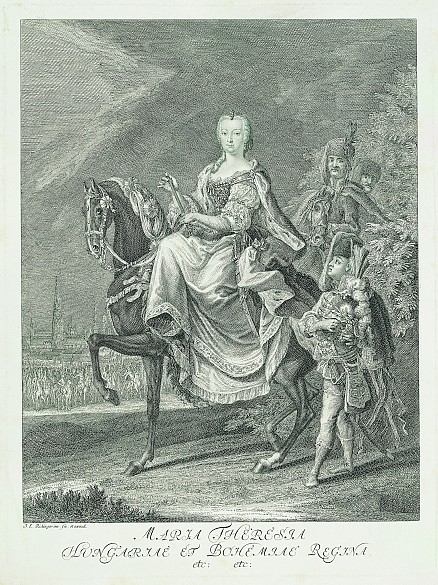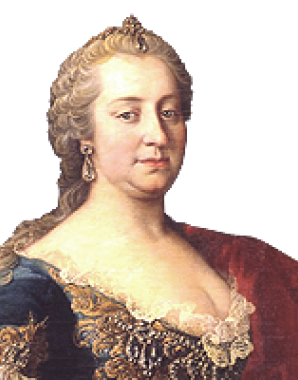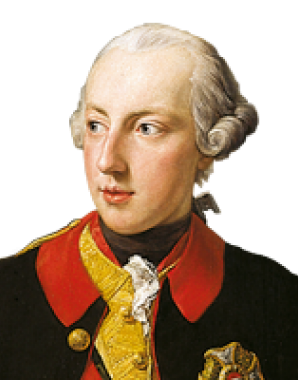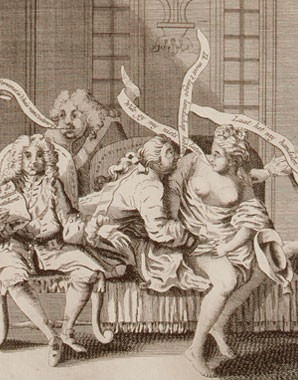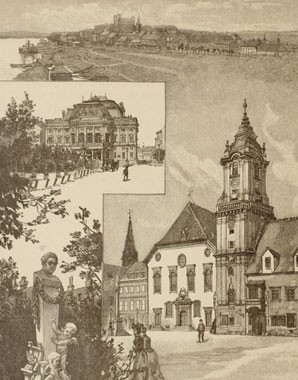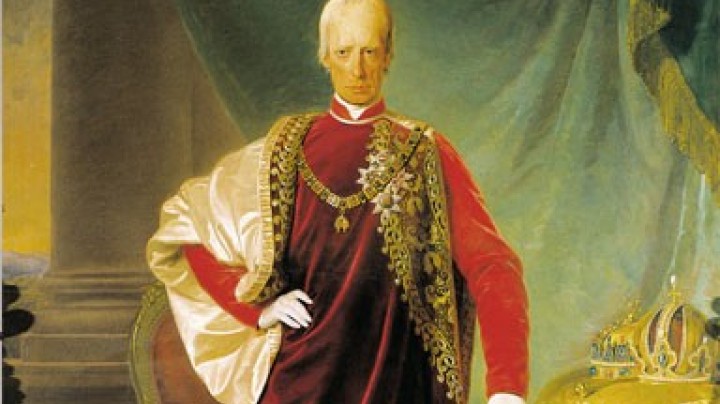Eljen király – Long live the king! Maria Theresa and Hungary
A heart-rending scene: beset by enemies on all sides, the newly-crowned Maria Theresa appears before the Hungarian parliament and asks Hungary for help. In her arms she holds a fretful Crown Prince Joseph, just a few months old. Moved, the gallant Hungarian nobles vow ‘Vitam et sanguinem pro rege nostro Maria Theresia’ – ‘Our life and blood for our king, Maria Theresa!’
The above is an oft-cited patriotic legend, which actually never took place in this form, but it does illustrate the power of rituals and ceremonies. Following the coronation, which was held in the presence of the senior clergy and nobility as representatives of the land, the key scene of the ceremony then took place, the ride to the Coronation Mound. Dressed in the coronation robes and wearing the time-honoured St Stephen’s Crown, high on her steed, Maria Theresa ascended a small rise constructed of soil from all counties of Hungary and pointed with her sword in all directions as a sign of her willingness to defend the kingdom against all enemies.
Upon swearing the coronation oath, through which the historic rights and the constitution of the kingdom were confirmed, Maria Theresa was now Rex Hungariae (king of Hungary). The Hungarians generously overlooked the fact that she was a woman, for there was no provision in the constitution for a female ruler. Although adamantly entitled ‘king’, she was now the lawful female ruler of the land, and in return could hope for advice and help from the estates.
In memory of the significant help provided by Hungary, throughout her life Maria Theresa showed clear signs of her benevolence towards the country. For instance, Crown Prince Joseph is mostly shown in childhood portraits wearing Hungarian traditional costume. However, when he became ruler, Joseph II significantly forwent a coronation ceremony, since being crowned would mean being bound by the oath to preserve the old constitution and the privileges of the estates, and this ran counter to the intentions of the ‘kalapos királyi’, ‘the king in a hat’, as the Hungarians scornfully referred to their uncrowned ruler. Joseph’s reforms met with fierce opposition in Hungary, so that he was compelled to revoke many reforms in Hungary in order to prevent an open insurrection.
Following the brutal suppression of the Hungarian Revolution 1848/49, and the suspension of Hungary’s historical special rights, Franz Joseph initially also dispensed with a coronation, so that he would not be obliged to make the same pledge. Only following the Compromise (Ausgleich), concluded in 1867 – with energetic backing from Elisabeth, well known for her positive stance towards Hungary – and the creation of a new constitution, was the way opened up for a coronation in Hungary. The last such coronation, that of Karl I, took place as late as 1916. Against the background of the disaster of the First World War, the archaic rituals and display of medieval feudal pomp generated considerable astonishment among contemporary observers.
